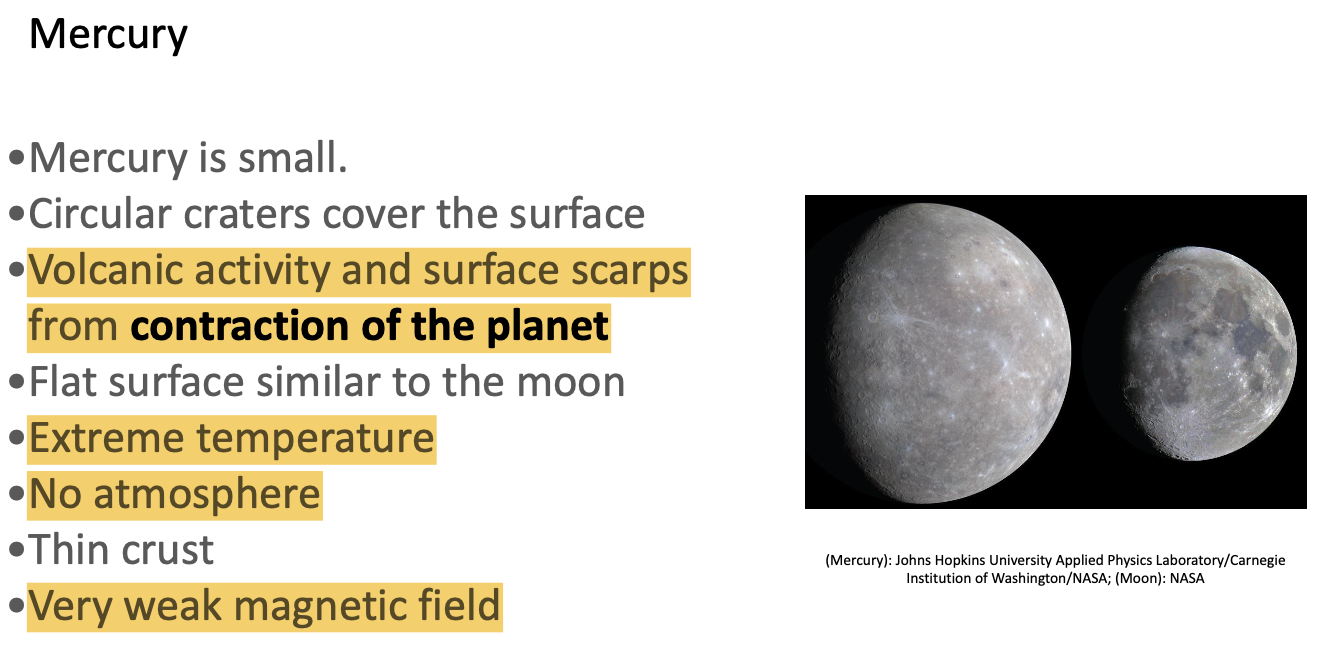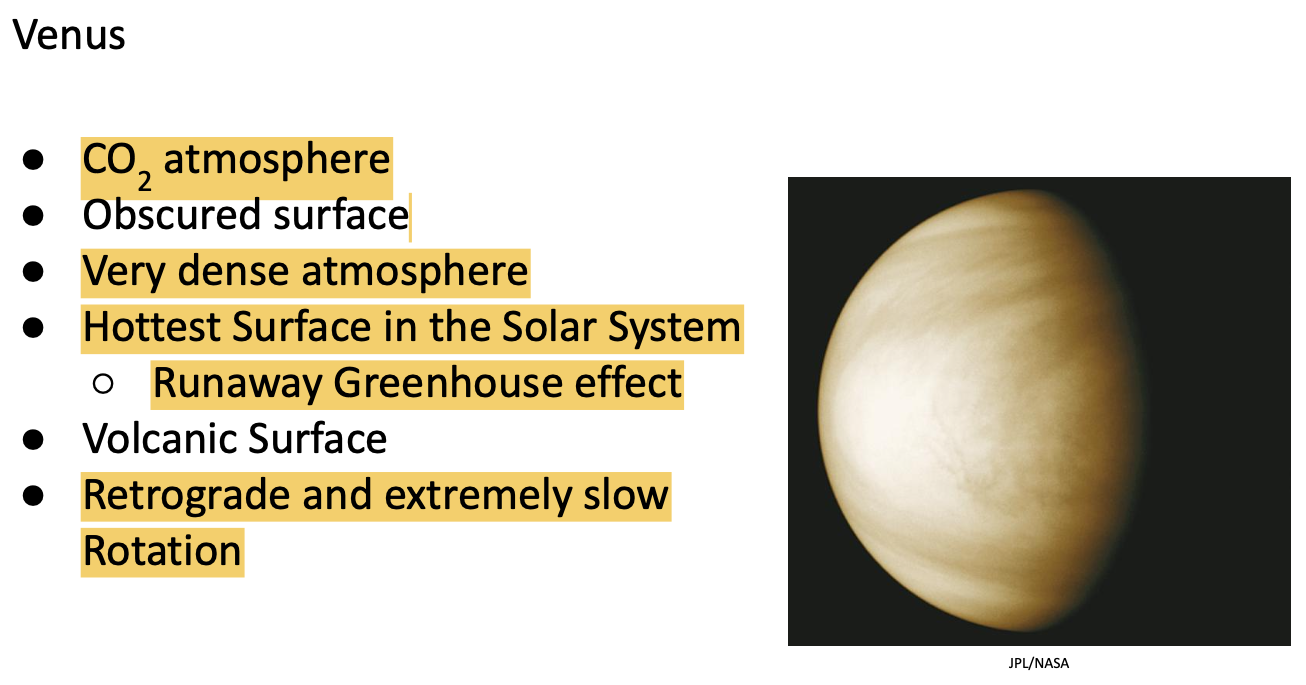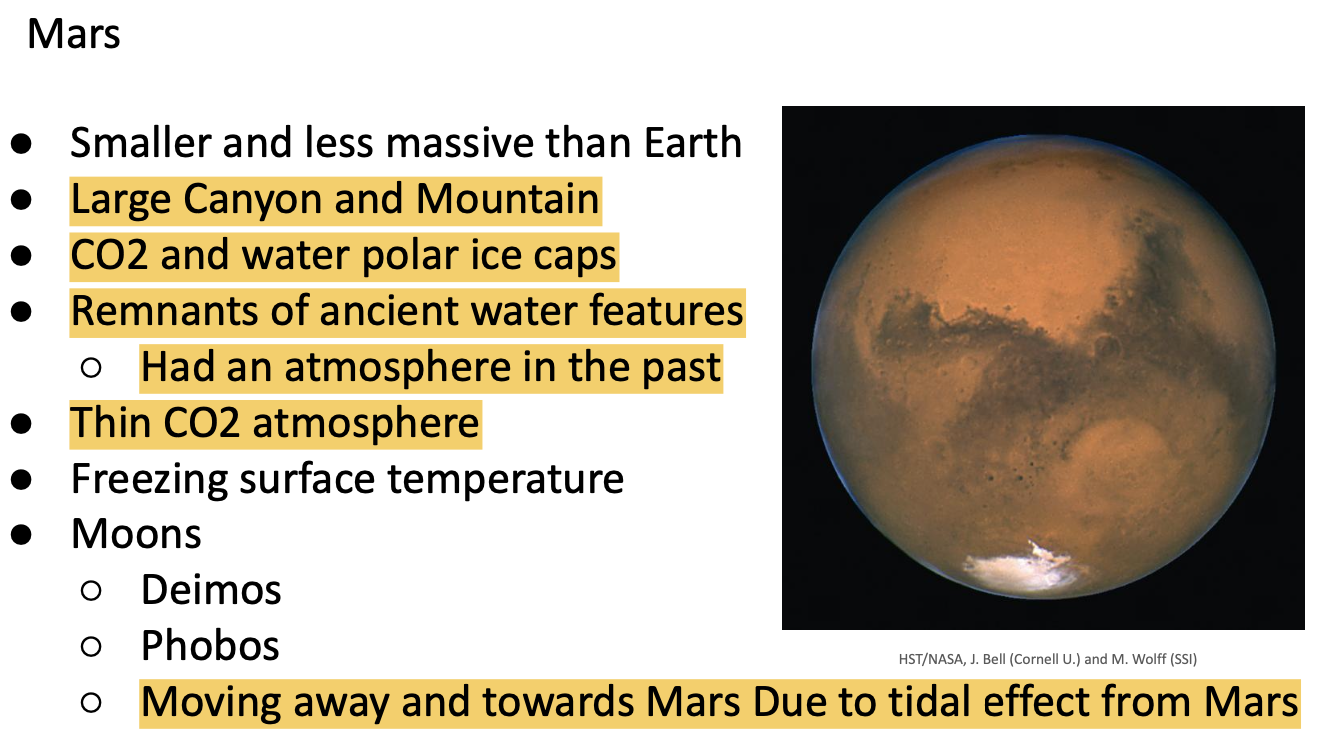astronomy 3 : lecture 14 - lecture
1/23
Earn XP
Description and Tags
Name | Mastery | Learn | Test | Matching | Spaced |
|---|
No study sessions yet.
24 Terms
atmosphere of Venus
96% CO2 (carbon), 3.5% N2, small amounts of water and other gases
the dense atmosphere of Venus
its pressure is about 100 times that of Earth’s
the hot atmosphere of Venus (hottest planet)
surface temperatures = 750 K (900 degree F). consequence of runaway greenhouse effect made hydrogen gas escape from Venus into space
slow and retrograde rotation of Venus
its spin is retrograde (backwards). two possible causes are (1) Venus was struck shortly after its birth by a huge planetesimal (2) tidal forces from the Sun and perhaps Earth may have shifted its spin axis over time
surface features of Mars
clear atmosphere and polar caps. home to the largest mountain, Olympus Mons
proof of water on Mars
stream flow
atmosphere of Mars
we know Mars has an atmosphere because of the presence of clouds and dust storms. the atmosphere is mainly CO2, with traces of N2, oxygen and water. but due to its low density, we don’t see the same effect as in Venus even though Mars is made up of mainly CO2
Mars is cold
caused by its thin atmosphere and it being far from the sun. the thin atmosphere makes it hard for it to capture heat. most water is frozen and locked up due to its cold temperature
visuals of Mars
fog seen in valleys and ground frost has been observed. CO2 “snow” falls on poles during winter (proof of water?)
ancient waters about Mars’ ancient atmosphere
Mars had to have a denser atmosphere in order to have water. cratering records supports this. cratering lets us know when the atmosphere disappeared
2 ways Mars lost its thick atmosphere
(1) Mars was struck by a huge asteroid that blasted the atmosphere into space and (2) Mar’s low gravity (due to its low mass) coupled with low volcanic activity produced a net loss of gas molecules into space over the first 1 to 2 billion years of existence, decreasing the effectiveness of the greenhouse effect to maintain a warm atmosphere
the Martian moons
irregularly shaped and small. Deimos is slowly moving away from Mars while Phobos is falling inward due to tidal forces
factors that affect planets’ current state
planet mass dictates whether they have an atmosphere and what shape they are. it also affects how quickly it cools and determines whether magnetic field is present. distance from the sun tells us how much energy they can get (temperature) and how easy it is to retain an atmosphere (create and maintain). also whether water is present
Mercury

Venus

Mars

Jupiter
low density and its atmosphere is mainly H, He, CH4, NH3, and H20. due to its low density we can say that its interior is composed of very light elements
Jupiter’s interior structure
interior becomes increasingly dense with depth, with gas turning to liquid hydrogen. deepere, liquid hydrogen compresses into liquid metallic H. it still has a iron-rocky core because of Juno
Jupiter’s interior
emits more energy than it receives from the Sun due to (1) heat left over from its creation and (2) its may still be shrinking in size so its converts gravitational energy into heat
Jupiter’s outer atmosphere
clouds appear to be particles of water, ice, and ammonia compounds. bright colors of cloud may come from complex organic molecules. jupiter rotates exremely fast!